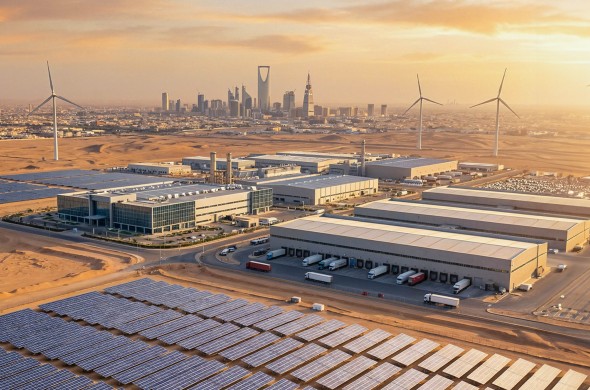There may not be a better region of the world to look at when it comes to not just urban design and innovative architecture but also sustainable features through the incorporation of green buildings and eco-friendly designs. Working with an online design consultant, virtually any organization around the world can adapt these strategies to create an impactful, energy-conscious new architecture that is defining the way people build in a growing and diverse world.
Dubai is the ideal example, with its opulent lifestyle and its futuristic residents. It is easy to think of this region as anything but eco-friendly and energy-conscious, yet there are numerous examples of this throughout the region’s architecture. With a very specific design consultation focus, organizations have become more capable than ever at creating spaces that meet the needs of the planet and people alike.
Leading Examples of Sustainable Architecture
You do not have to look far across the region’s landscape to find numerous examples of sustainable architecture. The following are some of the most impactful.
Midfield Terminal, Abu Dhabi
As a fast-paced, rapidly changing society, the Midfield Terminal in Abu Dhabi has transformed the airport in numerous ways. It worked to increase the passenger capacity to an incredible 45 million people per year, with the ability to double that within the years to come.
Yet, at the same time, it was designed to consume minimal energy, reducing its impact on the environment. It incorporates high-performance, double-glazing on its glass surfaces, providing for better energy management within spaces. More so, it features smart HVAC systems that do not rely on people to adjust them to reduce energy consumption.
The result? The Midfield Terminal was the largest structure ever to receive environmental certification around the world.
Twin Al Bahr Towers, Abu Dhabi
A dominating presence in the skyline, the Twin Al Bahr Towers were designed to have a responsive façade. It incorporates cultural elements in its beautiful design, but these two, 29-storey properties reaching 145 meters high do so with sustainability in mind.
The project is known for its LEED silver rating, one of the highest accomplishments across the world in such certifications. More so, their innovative façade is not only culturally specific but it's also designed to reduce heat transfer while also working to minimize CO2 emissions, giving back to the planet with each day.
Masdar City, UAE
It’s hard to overlook the incredible innovation and world-class urban community of Masdar City. This is a ground-breaking sustainable community that is designed to be a business-free zone, but a tech hub that marvels any around the world.
More so, the design of Masdar City was very specific from the start, aiming to be the first zero-carbon city in the world. To do this, it utilizes the latest technology in solar energy and smart buildings.
Aldar Market, Abu Dhabi
Yet another transformation happened in the one of the region’s oldest sites. Instead of building sustainability from the ground up, the visionaries here worked to create a revitalization of the oldest market in the region. They utilizes traditional architectural design and new technology to comprehensively change the region.
To revitalize this area with a sustainability focus, the organizations worked to develop strategies for carbon reduction and proactive environmental stewardship in every facet of the design and construction.
Green Building Best Practices and Standards
Why the focus on design that’s sustainable? A core reason for this is the area’s adoption of various green building codes and regulations aimed at reducing the air pollution and high energy demands of the region.
The region’s Green Certification standards have been put in place over the last 10 years, including the Estidama Pearl Rating System in Abu Dhabi, one of the most stringent and remarkable efforts. In addition to these and other local standards, many of the U.S. strategies are being implemented, including Leadership in Energy and Environmental Design (LEED) rating systems for buildings. Both of these two standards asses and rate a building based on specific sustainable standards, including energy efficiency, site location, water efficiency, indoor environment quality and materials, and waste management.
The Estidama Pearl Rating System and Green Building regulations contain a huge checklist of 79 specific actions organizations need to work towards to achieve the certification.
Innovative Trends in Sustainable Construction
Not only are the buildings and technology used different, but so are the construction process and materials. There is a strong shift, for example, towards 3D printing. Not only does this improve the overall speed of production and minimize waste production, but it also offers reduced labour costs and improved overall efficiency.
More so, there has been a remarkable change in the inclusion of women within the construction industry here. This, alongside a goal of zero carbon emissions targets, has transformed views on building in the region. It’s not just about taller or bigger, but better and more human-focused and planet-supporting strategies.
Benefits of Green Building in the Middle East
Speak to any online design consultation about the importance of green building anywhere and there is a long list of reasons to do so. In the Middle East, there are a number of notable reasons for the switch:
- Environmental benefits including energy and water conservation in one of the hottest regions of the country has proven critical for sustainability.
- Economic benefits, including increased quality of life, better cost margins on projects, and overall more demand from a region growing in residents, are also leading the charge.
- Social benefits, including proving the quality of life at all levels of society, are also encouraging this movement.
- Long-term cost savings in power and overall development are also core reasons so many cities have moved towards sustainability.
Saudi Arabia’s Leap Towards Sustainable Architecture
Consider several of Saudi Arabia’s accomplishments towards sustainable architecture:
- Green Buildings’ Impact in Saudia Arabia: The country's contributions to Vision 2030 set benchmarks for others to achieve. More so, some of the area's biggest projects, including Neom City, have helped not just to create sustainability but also to promote its viability in big cities.
- Riyadh Green Project: This project to transform Riyadh was done on such an important scale. It involved the planting of millions of trees to pull the industry back from the concrete jungle.
- AINama, Said Arabia’s Zero-Carbon City: A sustainable city-wide project, this goal is one of the most extraordinary as it aims to be self-sufficient utilizing renewable energy forms.
Without a doubt, sustainability is critical. In the UAE and surrounding areas, it’s not just a strategy, but a reality coming to life.
Read our latest insights, ideas, and perspectives that explore the trends shaping the future of business and society. Our consultancy services go hand-in-hand with these insights, confirming our position as industry leaders. Get in touch to find out more about our consulting services and industry expertise.



